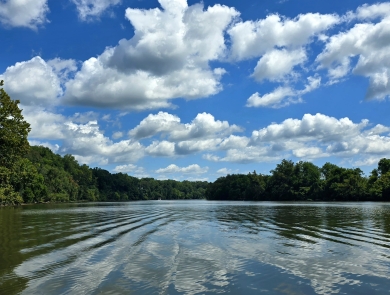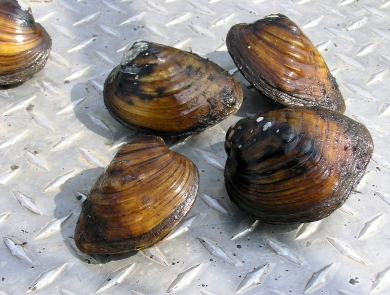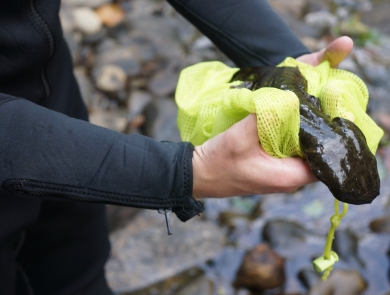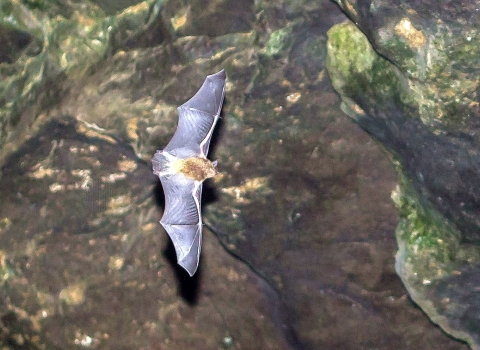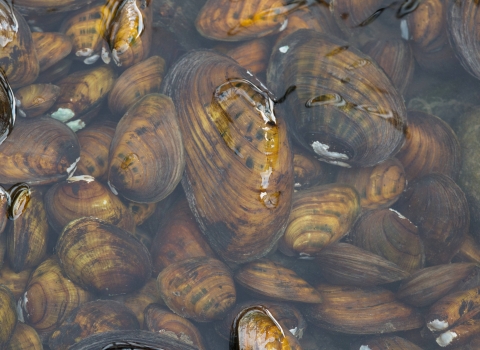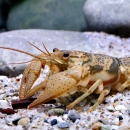What We Do
Project Consultation
The Missouri Ecological Services Field Office offers expert support to help project planners avoid, minimize, and mitigate impacts to federally listed species and their habitats. We work closely with federal agencies through Section 7 Section 7
Section 7 Consultation
The Endangered Species Act (ESA) directs all Federal agencies to work to conserve endangered and threatened species and to use their authorities to further the purposes of the Act. Section 7 of the Act, called "Interagency Cooperation," is the mechanism by which Federal agencies ensure the actions they take, including those they fund or authorize, do not jeopardize the existence of any listed species.
Learn more about Section 7 consultations under the Endangered Species Act (ESA), providing timely and science-based guidance to ensure compliance and conservation. To streamline this process, our office maintains the Missouri Threatened and Endangered Species Determination Key (Dkey) through the U.S. Fish and Wildlife Service’s IPaC (Information for Planning and Consultation) system, allowing users to receive automated, project-specific determinations for many species. We also offer technical assistance for non-federal projects and support the development of Habitat Conservation Plans (HCPs) for those seeking an Incidental Take Permit under Section 10(a)(1)(B) of the ESA.
Natural Resources Damage Assessment
The Missouri Field Office manages two very large mining sites, the Southeast Missouri Lead Mining District and Tri-State Mining District, that encompass multiple Superfund sites, thousands of acres of impacted land, and hundreds of miles of contaminated streams. The two mining districts make up the number one historic lead and zinc production areas in the nation, respectively. Managing these cases requires extensive coordination and collaboration with state partners, Department of the Interior Office of the Solicitor, U.S. EPA and the Department of Justice.
Outreach and Education
The Missouri Field office is dedicated to supporting conservation education across the state. Staff members often volunteer with partners at events to share the importance of conservation work, research, and partnerships. You can find our table at events such as Columbia Earth Day, Arrow Rock Birds, Bees and Blooms Festival, and many more. In 2023, the Missouri Field Office partnered with the U.S. Army Corps of Engineers to produce educational videos about bats, crayfish, and freshwater mussels. Those videos can be located in the Missouri Ecological Services Video Library.
Our Organization
Our Species
Endangered species recovery in Missouri is a collaborative and science-driven effort led by the U.S. Fish and Wildlife Service’s Missouri Ecological Services Field Office. Our office serves as a national center of expertise for listed bat, mussel, and hellbender species. Our team leads the development of official U.S. Fish and Wildlife Service recovery guidance and regulatory documents, contributing specialized knowledge and leadership that shape conservation strategies at both regional and national scales. This concentrated expertise allows us to play a pivotal role in advancing the recovery of some of the nation’s most imperiled species.
The Missouri Ecological Services also serves as the national recovery lead for several federally listed species where the office plays a critical role in guiding conservation actions and partnerships to improve the status of these species across their ranges. These species include:
- Big Creek Crayfish (Faxonius peruncus)
- Curtis Pearlymussel (Epioblasma florentina curtisi)
- Gray Bat (Myotis grisescens)
- Grotto Sculpin (Cottus specus)
- Mead’s Milkweed (Asclepias meadii)
- Missouri Bladderpod (Physaria filiformis)
- Niangua Darter (Etheostoma nianguae)
- Ozark Hellbender (Cryptobranchus alleganiensis bishopi)
- Pink Mucket (Lampsilis abrupta)
- Scaleshell mussel (Leptodea leptodon)
- St. Francis River Crayfish (Faxonius quadruncus)
- Tumbling Creek Cavesnail (Antrobia culveri)
- Western Fanshell (Cyprogenia aberti)
Projects and Research
Bats across North America are in decline, scientists across the globe strive to protect them. Our agency actively collaborates with federal, state and non-governmental partners to conserve and restore listed bat species. The full video series on bat conservation in Missouri can be accessed on YouTube.
Missouri's bats: flight to survival:...
There are more than 600 species of crayfish in the world, and about 400 in North America. Invasive species are negatively impacting ecosystems across the world, including crayfish habit Our agency actively collaborates federal, state and non-governmental partners to study and protect these aquatic invertebrates. The full video series on crayfish...
Freshwater mussels across the world, including Missouri, are increasingly threatened by habitat loss and degradation. Our agency actively collaborates with federal, state and non-governmental partners to study and protect these essential species. The full video series on freshwater mussel conservation in Missouri can be found on Youtube
...Get Involved
Our office frequently partners with schools, public and private conservation organizations, as well as local community leaders and national wildlife refuges to communicate our conservation mission and opportunities throughout the state of Missouri. We also work with these groups to develop projects, such as survey methods training, that may benefit at-risk as well as other important fish and wildlife species and their habitats.

